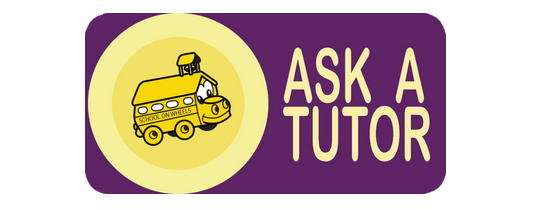Ask A Tutor Tuesday – 10/27/2015

This week, tutor Emile Kanhai discusses working with a high school student who was initially resistant to tutoring.
My most difficult moments as a tutor always come when working with students who have been newly enrolled in our tutoring program. I’ve learned to be patient with students and to understand that a student’s first tutoring sessions will be more about acclimating a student to tutoring then about helping them with their homework.
This summer, I spent a lot of time tutoring an older high school student who was not only new to School on Wheels, but also new to California. She was very homesick and overwhelmed by her sudden move to Los Angeles. Her anxiety and frustration manifested in her bad attitude and negative behavior. She was closed off and intensely difficult to work with. When she did engage with me, it was either through taciturn one word answers or by snapping at me angrily. Working with her was frustrating to say the least! Additionally, my background in education is from working as an Elementary School substitute teacher. Before this summer I had little to no experience working with high school students.
There’s no magical solution to working with students like this, but of all the techniques I tried, the most effective was simply showing up and being present and positive with her. For me that meant three things. First, giving my student my complete and undivided attention. Second, ignoring or brushing aside the sarcastic and negative things she said. Choosing what battles to fight is a technique that I learned as a substitute teacher. A lot of children and young adults misbehave as a way to receive negative attention, because it’s the only way they have been socialized to interact with adults. And third, paying close attention to her body language. My student was not a verbal communicator; a lot of what she “said” to me was through the way she would maintain or break eye contact or position herself. (For example, crossed arms and shaking her leg was her way of telling me she was angry or bored, relaxed with her hands on the table or fiddling with her pencil meant she was interested and receptive to learning.)
My student is a lot easier to work with now. She’s much more talkative and eager to engage with me. She showed great initiative in researching subjects that interest her (the geography of Los Angeles county) and finding effective methods of studying (creating flashcards for her American History class). She’s polite and funny, and I genuinely enjoy our time together. My student’s shift in attitude didn’t happen overnight; it was a change that gradually took place over the course of many weeks. Those were some difficult weeks for me, but as rough as they were, it helped to imagine my student’s perspective. I learned a lot from my student, but the most important thing I learned is that it’s one thing to espouse empathy, but it’s another thing to practice it.
About the tutor: Emile joined School on Wheels in 2015 as an AmeriCorps Summer VISTA before becoming the Learning Center Support. He previously worked as a LAUSD substitute Elementary School teacher and a graphic designer at Scholastic Book Fairs.
Have a question for our Ask a Tutor feature?
Email askatutor [at] schoolonwheels.org or use the #AskATutor hashtag on any of our social media sites.
